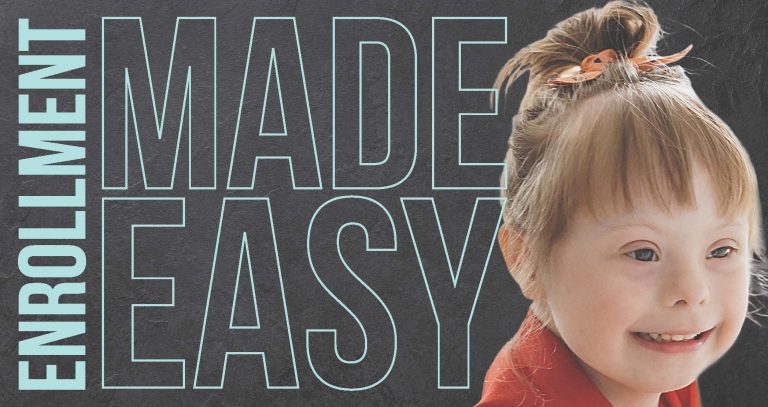Tips for Navigating IEPs
The new school year kicking off can bring both excitement and stress! While many families are preparing for the first day(s) by gathering their supplies and new shoes, families of children with disabilities are often also preparing for any accommodations or tools their child will need to be successful in the upcoming year.
If your child is receiving special education services through the school system, he or she likely has an Individualized Education Plan (commonly referred to as an IEP). IEPs are required per the Individuals with Disabilities Education Act for any child receiving special education services. In order to develop this IEP, a meeting is usually facilitated once or twice a year. Meetings to develop an IEP include several key individuals such as the general education teacher, the special education teacher, therapists or others working with the child, a translator (if necessary), advocates for the child (if necessary), the parent(s) (of course!), and, sometimes, the child (when appropriate).
IEPs and the meetings surrounding them can be overwhelming to many parents. An IEP is a legally binding contract that public schools are required to adhere to, so it’s important that the IEP is accurate and thought out so that it encompasses everything the child will need. An IEP can be developed at any time in a child’s educational journey; it is not limited to the beginning of school or at kindergarten. If the parent would like to see their child benefit from an IEP, they can contact the school district or the child’s school and request that an evaluation/assessment be completed. This will trigger the process to begin, and specific timelines will be set in place for when an IEP meeting will be held, in a timely manner.
Because these meetings can be overwhelming, we have put together a few tips to help you navigate these meetings and get the most out of them!
Tip #1, Familiarize yourself with some of the common terminology used.
Most people learn very early on when navigating the service system that it is full of new vocabulary and especially full of acronyms! Learning some of the phrases that will be used will help you feel confident and understand what is being discussed in the meeting. A Day in Our Shoes has created an amazing exhaustive list of terms on the web and a free downloadable PDF document that you can check out and even print to take with you to the meeting if you want.
More importantly, if you don’t understand or are confused with terminology being used, stop the meeting and ask! Always ask! Service professionals who have been working in this field for many years sometimes forget that not everyone lives and breathes this terminology every day, or maybe others have not had the exact same training and experience as them. Service professionals should try their best to avoid the use of acronyms in group meetings to ensure everyone can understand what is being discussed.
Tip #2, Prepare for the meeting and gather helpful information.
Many times, the services and supports a child receives reach far outside of the walls of the school. Parents should discuss any upcoming IEP meeting with anyone who is heavily involved with the child’s care, including privately paid therapists, Medicaid case managers, private tutors, and caregivers. Gathering this information can help you understand what goals these individuals have for the child and help ensure the information about what they are working on is all shared at the meeting. If the child has had any recent assessments, parents can read those before the meeting and note any questions or concerns they have so they can be brought up during the meeting.
Having a child with a learning and developmental delays was such an overwhelming process. Learning how to navigate the IEP world was paramount and helped allow us to advocate in the best way for our son. We learned to use our voice and always made sure we went into every meeting with positive achievements so that we did not leave disheartened. An IEP is the best thing to have in place to ensure that your child’s individual needs will be met.
-Stacey H. Colorado CDASS Attendant & Mother (used with permission)
Tip #3, Focus on the positives too.
When discussing the child with others, make sure you focus on the positives, not just the things they are working on overcoming! It can be easy to focus on all the things they can’t do or things they still need to accomplish. Everyone has strengths, and strengths can also be a gateway to finding the things that work best for them and motivate them! For example, if a particular child is a huge fan of baseball and can tell you every player on the Yankees roster, a pack of baseball cards might be the perfect motivation for learning something new or tackling a behavior struggle.
Be especially mindful of how people speak about the child, especially if they are present. Children absorb far more than we realize, and it is important that they feel loved and supported on their journey. Sharing things people like about the child and what they do well can be a huge way to boost self esteem and help them accomplish the next milestone they are working toward. If there is a plan or option to have the child attend the IEP meeting, remember this, and ensure others in the room are being respectful of this too.
Remember that when things get stressful, working collaboratively is key. Remember that the professionals involved in care, such as the teachers and school staff, are there to help and want to see the child succeed! While the parent will always know the child best, everyone plays a critical role in the child growing and learning, so it is important the everyone remains calm and works together.
Tip #4 – Know your rights and the laws that surround IEPs
As mentioned in #1, don’t hesitate to interrupt the meeting or speak up if you have a question or concern. If a parent is feeling particularly overwhelmed or feeling like the school is not doing what is right and fair for the child, seek out a professional advocate to help. Professional Educational Advocates know the IEP process and can provide valuable support and information with an unbiased perspective. Some educational advocates are free and can be provided by the school district while others may work independently and charge a fee for their services and time. If a parent would like to invite a friend or relative to attend the meeting to help with processing information and asking questions, that is always okay too.
If the results of the IEP don’t align with the parent’s goals and an agreeable resolution cannot be met with all parties involved, parents can always seek outside support to file a complaint and request mediation. Parents have the right to take the IEP draft home from the meeting and review/discuss it before signing. Parents can file a complaint with the state’s Department of Education and request a due process hearing if there is a problem. Parents can always request a meeting to revise the IEP, so if the 1-2 meetings a year is not enough, parents can speak up and make the request known. The school should issue updates throughout the year about how the child is doing and what progress they are making on their goals. If there are concerns or a child is struggling to meet their goals, a revision to the IEP and another meeting may be necessary.
By taking the time to learn about the IEP process and how to best tackle it, everyone can help ensure that the child is successful and has the support they need.
For children or young adults on Medicaid, talking to the case manager or service coordinator about how service needs are changing and what their different needs are during the school year can also be helpful.

by Kady Predota
Vice President of Sales and Marketing Operations







